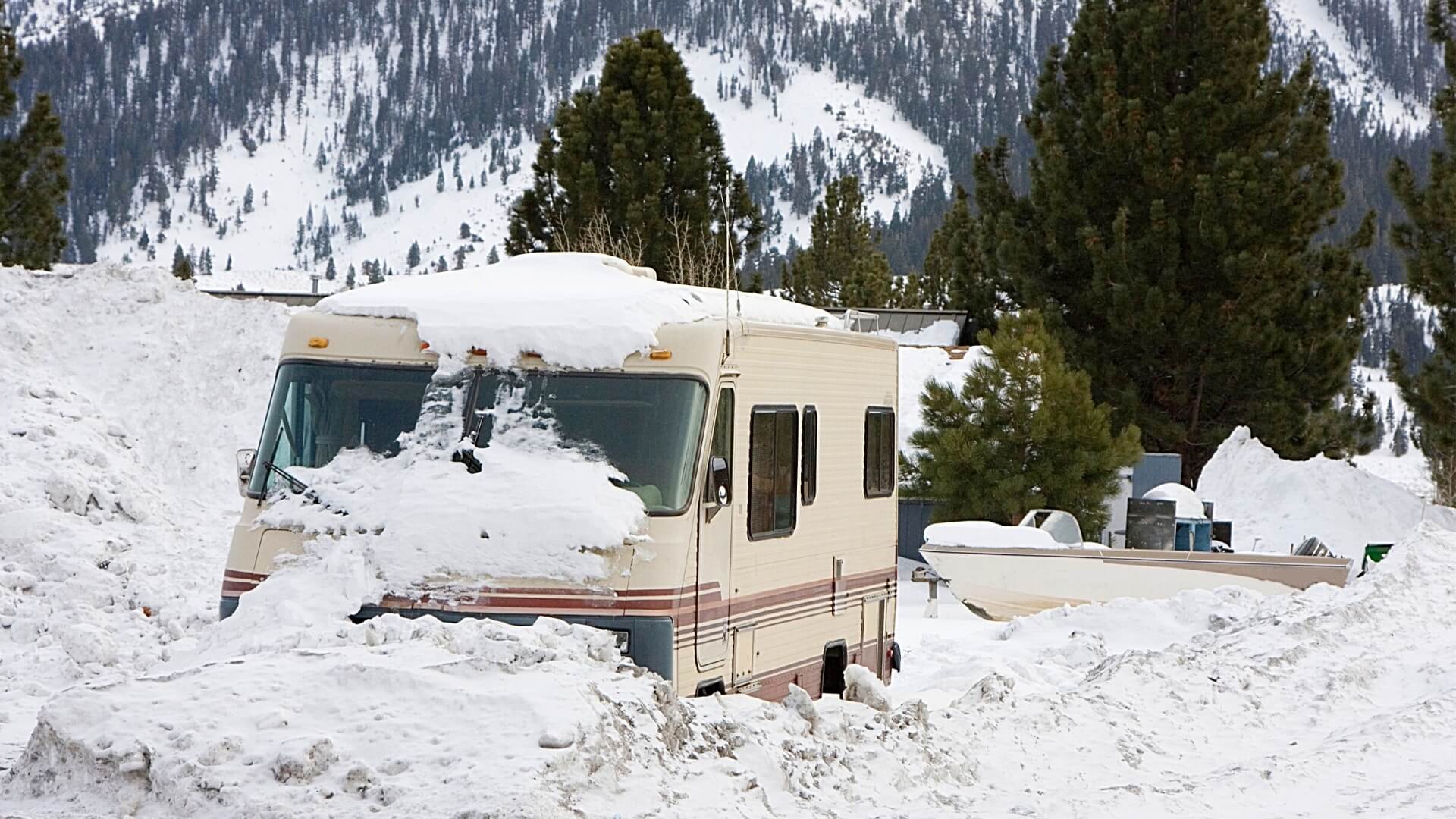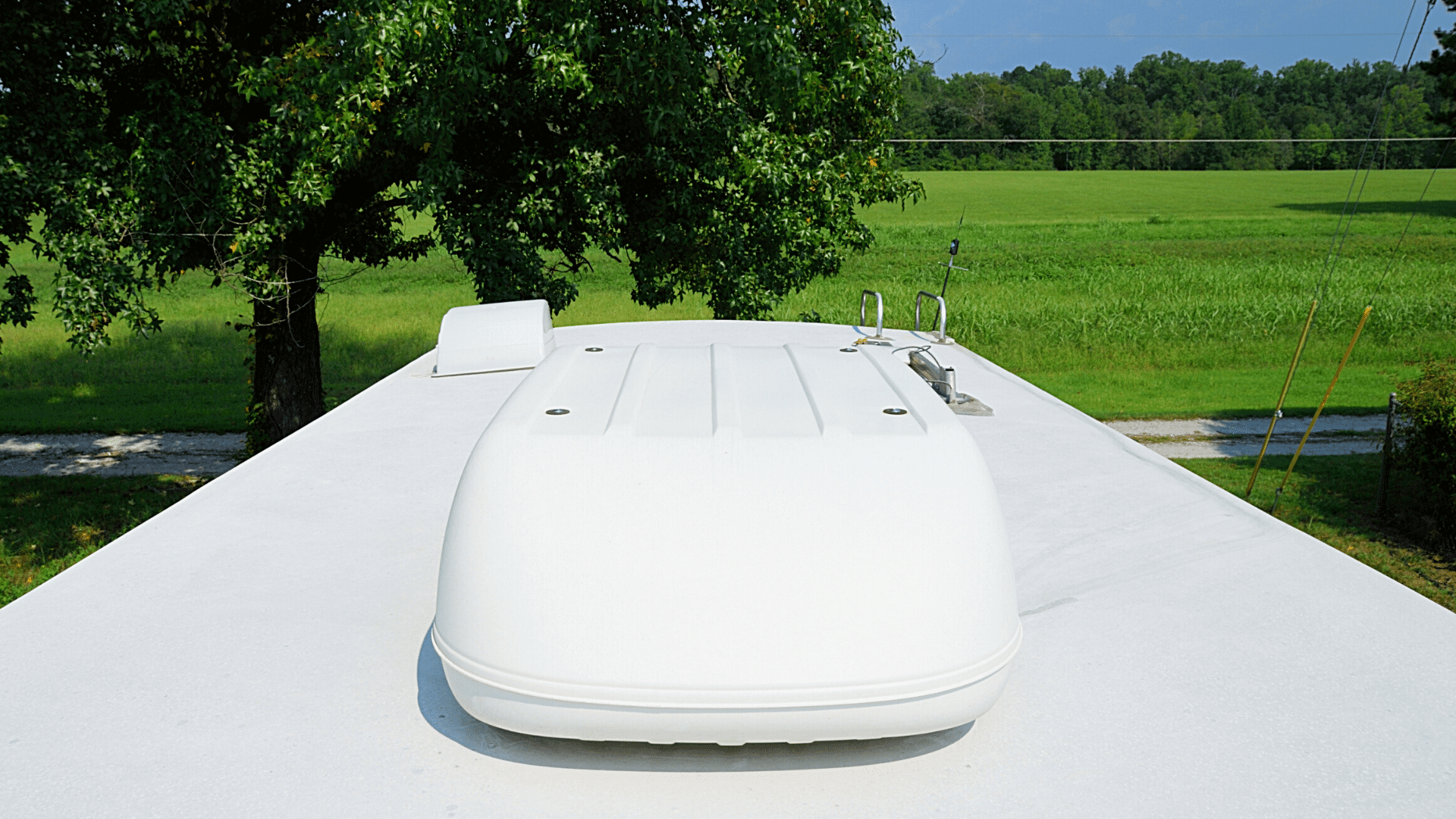Table of Contents Show
Properly winterizing your RV is extremely important. If you don’t get all the water out of your lines, you could end up with burst pipes and a costly repair. Definitely not something you want to deal with. That is why it is important to get the best air compressor for RV winterizing.
What Is An RV Air Compressor
An air compressor uses an electric motor to pressurize air, which can blow the water out of your RV’s lines. There are a couple of different types of air compressors for RV winterizing. One type is a tank-equipped air compressor. One benefit of a tank-equipped air compressor is that you can also use it with air tools if you like to do hands-on projects. The downside is that they are large and sometimes heavy.
For many RVers, however, the best air compressor is a tankless option. We recommend tankless because it provides everything you need for RV winterizing but is much more compact and portable. Keep reading for our #1 recommendation below.
Either type of air compressor allows you to blow out your RV lines for winter. It works by using the force of the air to clear out every last drop of water.
Why Do You Need An RV Air Compressor for winterizing your RV
Come winter, it isn’t enough to simply drain your tanks. If this is all you do, you will have lots of water left in the lines throughout your RV. Any of these locations could easily freeze. When water freezes, it expands and can burst your RV pipes causing an enormous mess and potentially even ruining your RV.
Although you can opt for antifreeze to winterize your RV, using an air compressor is much faster and more convenient. In addition, you don’t have to de-winterize your RV at the start of next year. All you need to do is hook up to a water source as you usually would, and you are good to go.
Pro Tip: If you’re looking for the overall best air compressors, check out the 5 Best Air Compressors for Your RV Tires.

Best RV Air Compressor for RV winterizing
- PORTABLE *AUTOMATIC* COMPRESSOR for RVs & TRAILERS (Model: 40047, 150 PSI, Any Tire Size) - Hit the open road with an...
- POWER YOUR JOURNEY: Versatile Air Compressor for RVs & More. The 450P-RV Portable RV Air Compressor is your go-to...
Hands down, the best air compressor for winterizing your RV is the Viair 450P. This portable air compressor has a 100% duty cycle. This allows you to run it continuously without having to rest it. The option for a longer run time before needing your give your air compressor a rest means you can finish the process of RV winterizing much faster.
It is also small and portable without sacrificing power. You can also use the Viair 450P to inflate your RV’s tires, and it has an automatic shutoff to prevent overinflation.
Winterizing Accessory
To be prepared to winterize your RV with an air compressor, you’ll need a few accessories to complete the job. The Viair RV Winterization kit comes with everything you need to winterize your RV this season. It includes a ¼” quick connect coupler and stud, blow out plug, regulator, and 220PSI gauge.
How to winterize your RV with air compressor
- Disconnect from your water source or turn off your pump if you aren’t connected to city water.
- Drain the water heater with any hot water faucet open to ensure that all the water drains out. Then bypass the water heater by flipping the bypass valves.
- If you have water running to a dishwasher, fridge, or washing machine, consult their instruction manuals for winterizing information.
- Drain your fresh water tank.
- Connect the blowout plug to the city water inlet. Remember, you aren’t connecting the blow out plug to your freshwater tank.
- Connect the hose from your air compressor to the blowout plug.
- Connect the air compressor to a power source and turn it on. Set the pressure to no more than 30 psi. You can connect your water pressure regulator as well, to be safe.
- Using not over 30 PSI, run the air compressor.
- While running the air compressor, systematically open all faucets one at a time. Open each handle, hot and cold. Don’t forget about the outdoor shower or kitchen sink if you have them. Keep running the air compressor until only air comes out of the faucets.
- Flush the toilet and keep the lever pressed until only air comes out.
- Even though you blew out the lines, you still have to use antifreeze in your p-traps. Don’t forget your shower. Also, put a couple of inches in your toilet bowl to ensure the seal stays wet.
- Last, dump your gray and black water tanks.
Last update on 2024-07-25 / Affiliate links / Images from Amazon Product Advertising API








Yes I winterize blowing out my lines and putting antifreeze in the p traps and drains
I use the ViAir compressor with a regulator and control valve plugged into my city water input to blow the water out after bypassing the water heater.
Then I simply add some antifreeze to the p-traps , and pour some into the black tank via the toilet.
Living in Central Texas, we only get a few days of a hard freeze.
We winterize with anti- freeze
I use the air compressor method. Saves a lot of time & effort when you want to use it the next time. Being Scotch/ Irish I use a $98 Porter-Cable compressor. I spent ~$50 for the hose & connector to the fresh water inlet. I drain the hot water tank but do not use the by-pass as I want to blow out those lines as well. One other thing I highly suggest. Locate your water pump(rarely in a convenient place) and disconnect the filter bowl and drain it. Many years ago I did not. Apparently it froze and cracked. I ended up with a lot of water all over the floor when I filled the water tank the next time we used it.
Winterizing…….I use both an air compressor and antifreeze. I first blow out the system with 30psi, ampty the water that ends up in the tanks as a result, and then fill the lines with antifreeze. I know I don’t need to do both but I like to not have any risk of dilution of the antifreeze.
I have the Viair P400RV. I bought it mainly for airing up the tires, but I ended up buying the winterizing kit from watching your video about it. So I use it to blow the lines out and add the antifreeze to the p-traps.
I also blew out the low point drains. I did that last as any water being blown around to the outputs could end up settling in the low point.